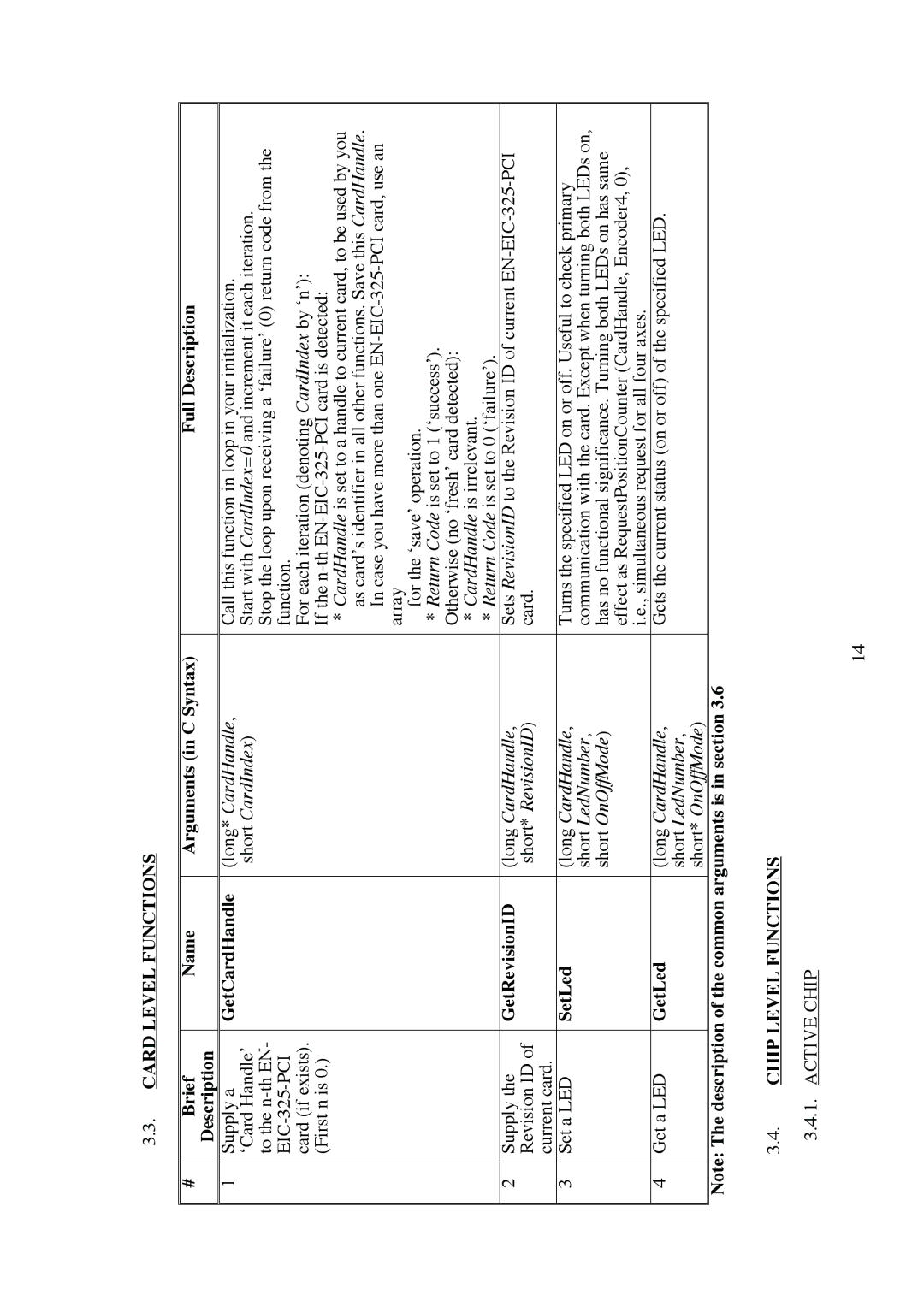
3.3. CARD LEVEL FUNCTIONS
#
Brief
Description
Name
Arguments (in C Syntax)
Full Description
1 | Supply a | GetCardHandle | (long* CardHandle, | Call this function in loop in your initialization. |
| ‘Card Handle’ |
| short CardIndex) | Start with CardIndex=0 and increment it each iteration. |
| to the |
|
| Stop the loop upon receiving a ‘failure’ (0) return code from the |
|
|
|
| function. |
| card (if exists). |
|
| For each iteration (denoting CardIndex by ‘n’): |
| (First n is 0.) |
|
| If the |
|
|
|
| * CardHandle is set to a handle to current card, to be used by you |
|
|
|
| as card’s identifier in all other functions. Save this CardHandle. |
|
|
|
| In case you have more than one |
|
|
|
| array |
|
|
|
| for the ‘save’ operation. |
|
|
|
| * Return Code is set to 1 (‘success’). |
|
|
|
| Otherwise (no ‘fresh’ card detected): |
|
|
|
| * CardHandle is irrelevant. |
|
|
|
| * Return Code is set to 0 (‘failure’). |
2 | Supply the | GetRevisionID | (long CardHandle, | Sets RevisionID to the Revision ID of current |
| Revision ID of |
| short* RevisionID) | card. |
| current card. |
|
|
|
3 | Set a LED | SetLed | (long CardHandle, | Turns the specified LED on or off. Useful to check primary |
|
|
| short LedNumber, | communication with the card. Except when turning both LEDs on, |
|
|
| short OnOffMode) | has no functional significance. Turning both LEDs on has same |
|
|
|
| effect as RequestPositionCounter (CardHandle, Encoder4, 0), |
|
|
|
| i.e., simultaneous request for all four axes. |
4 | Get a LED | GetLed | (long CardHandle, | Gets the current status (on or off) of the specified LED. |
|
|
| short LedNumber, |
|
|
|
| short* OnOffMode) |
|
Note: The description of the common arguments is in section 3.6
3.4. CHIP LEVEL FUNCTIONS
3.4.1. ACTIVE CHIP
14
